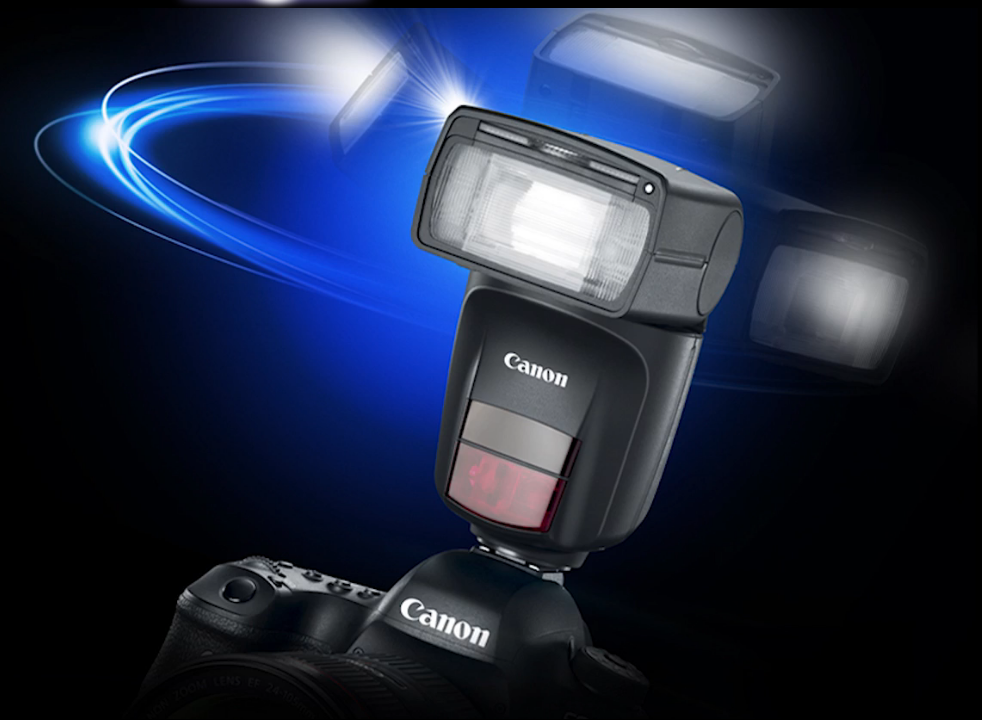This article lists what I consider the top wide-angle lenses for Nikon cameras. These lenses come in three types. Nikon DX lenses are made for Nikon’s APS-C (DX) format cameras, Nikon FX lenses are for Nikon’s full-frame DSLRs, and there’s a third category of Nikkor Z lenses for Nikon’s new mirrorless cameras.
What is a wide-angle lens, and when to use it?
A wide-angle lens is defined by its focal length that is less than 24mm on a full-format camera (24×36) and about 18mm (or shorter) on an APS-C body. So, what are the benefits of using such a short focal length? Well, it will allow you to add more elements into your picture and obtain an impression of the immensity of your scene (larger angle of view). The wide-angle lens clearly deforms objects close to the lens. For example, try taking pictures of a friend from a very close distance away with your wide-angle lens, you’re sure to notice a big distortion of the face features. That’s why wide-angle isn’t used as portrait-lens.
Most landscape photographers take pictures with wide-angle lenses. The perspectives are increased with a wide-angle compared to a standard 24-70mm lens. Wide-angle lenses also tend to exaggerate and emphasize perspectives and make it appear so that objects between different levels are really far apart. If you stand at the edge of a subject close to you, you will see it appear distorted and large compared to the rest of your image, which gives you deeper effects.
it is clearly better to use a wide-angle lens to get a larger angle of view. Landscape photography is a good example; the second main use of wide-angle lenses in shooting architecture and buildings.
Therefore, before starting, I would like to sum up some of the important features that you should consider when choosing the right wide-angle lens for your use.

Photo by Brett Sayles from Pexels
Factors you should consider when choosing the best wide-angle lens
Image quality: From sharpness to distortion, everything comes down to image quality. A lens could excel by every other measure, but few photographers would buy it if it fails every optical test.
Focal length: the lens is considered wide-angle if its focal length is less than 24mm and wider. There are some extra benefits when the focal length reaches 14mm or 15mm, as well as zooms with a greater-than-expected “telephoto” range.
Autofocus or manual focus: Some of the lenses in the list below are manual focus only. That generally saves both money and weight, and manual focus isn’t the end of the world for a lot of wide-angle shooters. That said, most photographers prefer the option of autofocus as well, all else equal.
Price/value: For most of us, a close second to image quality – and another potential deal-breaker – is simply the price, or perhaps more accurately, the value of the lens. Wide angles span a wide range of prices. The lenses below sell for a couple of hundred dollars at the cheapest to nearly two thousand dollars at the most expensive.
Size/weight: Wide-angle lenses can get heavy. Some of them weigh just as much as telephotos, easily breaking the 1 kilo (2.2 pounds) mark. For many landscape and travel photographers, something lighter is just a necessity.
Filter capability: Many wide-angle lenses don’t have a screw-in filter slot at the front. In order to use filters with non-threaded lenses, you’ll need to buy a large, expensive adapter as well as larger, more expensive filters.
My recommended Wide-angle lenses List for Nikon
As you would expect, any list like this is bound by the author’s own preferences. If there were just one “best” wide-angle for everyone, lens companies wouldn’t be making so many different options. The following is my list:
Table of content
- Nikon DX lenses (for Nikon’s APS-C (DX) format cameras)
- Sigma 8-16mm f/4.5-5.6 DC HSM
- Tamron 10-24mm f/3.5-4.5 Di II VC HLD
- Tokina atx-i 11-16mm f/2.8 CF
- Sigma 10-20mm f/3.5 EX DC HSM
- Nikon AF-P DX 10-20mm f/4.5-5.6G VR
- Nikon FX lenses (for Nikon full frame cameras)
- Sigma 14-24mm f/2.8 DG HSM Art
- Nikon AF-S 16-35mm f/4G ED VR
- Sigma 12-24mm f/4 DG HSM Art
- Tamron SP 15-30mm f/2.8 DI VC USD G2
- Nikon 20mm f/1.8
- Nikon 24mm f/1.4G AF-S ED
- Tokina Opera 16-28mm f/2.8
- Nikkor Z lenses (for Nikon mirrorless cameras)

Photo by Helena Lopes from Pexels
Nikon DX lenses (for Nikon’s APS-C (DX) format cameras)
Well-suited for landscape, architectural, and interior photography, the Nikon F-mount 8-16mm f/4.5-5.6 DC HSM from Sigma is a sleek ultra-wide zoom featuring quick focusing performance and impressive optics. The optical layout incorporates a series of low-dispersion glass elements, which reduce chromatic aberrations and color fringing, along with three aspherical elements to minimize distortion and spherical aberrations for improved sharpness.
Individual elements also feature a Super Multi-Layer Coating that controls ghosting and flare to better suit working in bright and backlit conditions. Complementing the lens design is a Hyper Sonic Motor, which promotes fast, quiet, and precise autofocus, along with full-time manual focus override, and a built-in lens hood is also incorporated to further protect the front lens element and guard against flare.
Specs
- Focal Length 8 to 16mm (35mm Equivalent Focal Length: 12 to 24mm)
- Maximum Aperture f/4.5 to 5.6
- Minimum Aperture f/22
- Lens Mount Nikon F
- Format Compatibility APS-C
- The angle of View 2° to 83.2°
- Minimum Focus Distance 45″ / 24 cm
- Maximum Magnification 13x
- Optical Design 15 Elements in 11 Groups
- Diaphragm Blades 7
- Focus Type Autofocus
- Image Stabilization None
- Filter Size None
- Dimensions (ø x L) 95 x 4.16″ / 75 x 105.7 mm
- Weight 22 lb / 555 g
A convenient wide-angle zoom, this 10-24mm f/3.5-4.5 Di II VC HLD Lens from Tamron is designed for DX-format Nikon F-mount DSLRs, where it provides a 15-36mm equivalent focal length range. Benefitting the versatile range of perspectives is an advanced optical design that includes a pair of low dispersion elements and two aspherical elements to suppress both chromatic and spherical aberrations for a high degree of clarity, sharpness, and color fidelity. A BBAR coating is also featured to reduce surface reflections, flare, and ghosting for improved contrast when working in strong lighting conditions.
Specs
- Focal Length 10 to 24mm (35mm Equivalent Focal Length: 15 to 36mm)
- Maximum Aperture f/3.5 to 4.5
- Minimum Aperture f/22 to 29
- Lens Mount Nikon F
- Format Compatibility APS-C
- The angle of View 108° 44′ to 60° 2′
- Minimum Focus Distance 4″ / 23.88 cm
- Maximum Magnification 19x
- Optical Design 16 Elements in 11 Groups
- Diaphragm Blades 7, Rounded
- Focus Type Autofocus
- Image Stabilization Yes
- Filter Size 77 mm (Front)
- Dimensions (ø x L) 29 x 3.2″ / 83.57 x 81.28 mm
- Weight 5 oz / 439 g
An update to a prized zoom, the Nikon F-mount atx-i 11-16mm f/2.8 CF from Tokina is a versatile ultra-wide zoom well-suited for landscape, architecture, and interior shooting. Characterized by its bright f/2.8 constant maximum aperture, consistent brightness is afforded throughout the zoom range and benefits working in available lighting conditions. The optical design incorporates a series of aspherical and low dispersion elements, which suppress a variety of aberrations for improved sharpness and clarity.
Individual elements are also multi-coated to resist flare and ghosting for greater contrast and color accuracy when working in bright or backlit conditions. Complementing the optics, this lens features a One-Touch Focus Clutch Mechanism for fast-changing between AF and MF settings, and an internal focusing design is used for responsive focusing performance.
Specs
- Focal Length 11 to 16mm (35mm Equivalent Focal Length: 16.5 to 24mm)
- Maximum Aperture f/2.8
- Minimum Aperture f/22
- Lens Mount Nikon F
- Format Compatibility APS-C
- The angle of View 104° to 82°
- Minimum Focus Distance 81″ / 30 cm
- Maximum Magnification 09x
- Optical Design 13 Elements in 11 Groups
- Diaphragm Blades 9
- Focus Type Autofocus
- Image Stabilization No
- Filter Size 77 mm (Front)
- Dimensions (ø x L) 31 x 3.51″ / 84 x 89.2 mm
- Weight 22 lb / 555 g
Covering a flexible ultra-wide range, the Nikon F-mount 10-20mm f/3.5 EX DC HSM from Sigma is a versatile zoom well-suited for landscape, architectural, and interior photography. The lens’s optical design incorporates a series of low dispersion and aspherical elements, which help to reduce chromatic and spherical aberrations throughout the zoom range, as well as contribute to improved sharpness and clarity.
A Super Multi-Layer Coating is also used to suppress flare and ghosting for improved contrast and color accuracy. Benefitting the imaging attributes, a Hyper Sonic Motor also affords quick and quiet autofocus performance as well as full-time manual focus override.
Specs
- Focal Length 10 to 20mm (35mm Equivalent Focal Length: 15 to 30mm)
- Maximum Aperture f/3.5
- Minimum Aperture f/22
- Lens Mount Nikon F
- Format Compatibility APS-C
- The angle of View 7° to 70.7°
- Minimum Focus Distance 45″ / 24 cm
- Maximum Magnification 15x
- Optical Design 13 Elements in 10 Groups
- Diaphragm Blades 7
- Focus Type Autofocus
- Image Stabilization None
- Filter Size 82 mm (Front)
- Dimensions (ø x L) 44 x 3.47″ / 87.3 x 88.2 mm
- Weight 1 lb / 520 g
A versatile wide-angle zoom for Nikon DX-format DSLRs, the AF-P DX NIKKOR 10-20mm f/4.5-5.6G VR is a 15-30mm-equivalent lens well-suited to landscapes, cityscapes, architecture, and interior shooting. Despite its wide field of view, Vibration Reduction (VR) image stabilization is featured to help minimize the appearance of camera shake for sharper handheld shooting.
The lens also features a pulse stepping motor AF system, which benefits both video and photo applications due to its fast, quiet, and smooth focusing performance. Concerning its optical design, three aspherical elements are used to control spherical aberrations and distortion throughout the zoom range for improved sharpness and clarity. Additionally, a Super Integrated Coating has been applied to control lens flare and ghosting when working in strong lighting conditions.
Specs
- Focal Length 10 to 20mm (35mm Equivalent Focal Length: 15 to 30mm)
- Maximum Aperture f/4.5 to 5.6
- Minimum Aperture f/29
- Lens Mount Nikon F
- Format Compatibility APS-C
- The angle of View 109° to 70°
- Minimum Focus Distance 66″ / 22 cm
- Maximum Magnification 17x
- Optical Design 14 Elements in 11 Groups
- Diaphragm Blades 7, Rounded
- Focus Type Autofocus
- Image Stabilization Yes
- Filter Size 72 mm (Front)
- Dimensions (ø x L) 03 x 2.87″ / 77 x 73 mm
- Weight 11 oz / 230 g

Nikon FX lenses (for Nikon full-frame cameras)
Pairing a versatile range of wide-angle focal lengths with an impressively bright design, the Nikon F-mount Sigma 14-24mm f/2.8 DG HSM is an Art-series zoom, distinguished by its fast f/2.8 constant maximum aperture to suit working in available lighting conditions. Featuring a sophisticated optical design, this lens utilizes a series of low dispersion and aspherical elements to minimize both chromatic and spherical aberrations throughout the zoom range in order to achieve high sharpness, clarity, and color accuracy. A Super Multi-Layer Coating also helps to suppress lens flare and ghosting for color-accurate, contrast-rich imagery in a variety of lighting conditions.
Specs
- Focal Length 14 to 24mm
- Maximum Aperture f/2.8
- Minimum Aperture f/22
- Lens Mount Nikon F
- Format Compatibility Full-Frame
- The angle of View 2° to 84.1°
- Minimum Focus Distance 24″ / 26 cm
- Maximum Magnification 19x
- Optical Design 17 Elements in 11 Groups
- Diaphragm Blades 9, Rounded
- Focus Type Autofocus
- Image Stabilization None
- Filter Size None
- Dimensions (ø x L) 8 x 5.32″ / 96.4 x 135.1 mm
- Weight 53 lb / 1150 g
Covering a versatile array of wide-angle focal lengths, the AF-S NIKKOR 16-35mm f/4G ED VR from Nikon is a flexible zoom ideal for landscape, cityscape, and interior photography. Its constant f/4 maximum aperture maintains consistent illumination throughout the zoom range and suits working in a variety of lighting conditions. The optical design contains three aspherical elements and two extra-low dispersion elements, which greatly reduce distortion and aberrations for a high degree of sharpness, clarity, and accurate rendering.
A Nano Crystal Coat has also been applied to control flare and ghosting for greater contrast and color accuracy in harsh lighting and backlit conditions. Additionally, this lens also sports a Silent Wave Motor for fast and accurate autofocus along with VR II image stabilization to minimize the appearance of camera shake by 2.5 stops.
Specs
- Focal Length 16 to 35mm
- Maximum Aperture f/4
- Minimum Aperture f/22
- Lens Mount Nikon F
- Format Compatibility Full-Frame
- The angle of View 107° to 63°
- Minimum Focus Distance 42″ / 29 cm
- Maximum Magnification 25x
- Optical Design 17 Elements in 12 Groups
- Diaphragm Blades 9, Rounded
- Focus Type Autofocus
- Image Stabilization Yes
- Filter Size 77 mm (Front)
- Dimensions (ø x L) 25 x 4.92″ / 82.5 x 125 mm
- Weight 5 lb / 680 g
Covering a useful variety of ultra-wide focal lengths, the Nikon F-mount Sigma 12-24mm f/4 DG HSM is an Art-series zoom, characterized by its advanced design to greatly reduce distortion for a high degree of sharpness. A series of low dispersion and aspherical elements minimize both chromatic and spherical aberrations throughout the zoom range in order to achieve high clarity and color accuracy. A Super Multi-Layer Coating also helps to suppress lens flare and ghosting for color-accurate, contrast-rich imagery in a variety of lighting conditions.
Specs
- Focal Length 12 to 24mm
- Maximum Aperture f/4
- Minimum Aperture f/22
- Lens Mount Nikon F
- Format Compatibility Full-Frame
- The angle of View 122° to 84.1°
- Minimum Focus Distance 45″ / 24 cm
- Maximum Magnification 2x
- Optical Design 16 Elements in 11 Groups
- Diaphragm Blades 9, Rounded
- Focus Type Autofocus
- Image Stabilization None
- Filter Size None
- Dimensions (ø x L) 02 x 5.18″ / 102 x 131.5 mm
- Weight 53 lb / 1150 g
Covering a versatile range of ultra-wide-angle focal lengths, the Canon EF-mount SP 15-30mm f/2.8 Di VC USD G2 from Tamron enhances this wide zoom with sophisticated optics, focusing, and image stabilization. Helping to realize sharp, clear imagery, the optical design incorporates aspherical and low dispersion glass elements to reduce both spherical and chromatic aberrations throughout the zoom range. A trio of coatings—AX, eBAND, and BBAR—have also been applied to suppress lens flare and ghosting for improved contrast and color rendering when working in bright and backlit conditions.
Specs
- Focal Length 15 to 30mm
- Maximum Aperture f/2.8
- Minimum Aperture f/22
- Lens Mount Canon EF
- Format Compatibility Full-Frame
- The angle of View 110° 32′ to 71° 35′
- Minimum Focus Distance 02″ / 28 cm
- Maximum Magnification 2x
- Optical Design 18 Elements in 13 Groups
- Diaphragm Blades 9, Rounded
- Focus Type Autofocus
- Image Stabilization Yes
- Filter Size Gel Filter (Rear)
- Dimensions (ø x L) 87 x 5.71″ / 98.4 x 145 mm
- Weight 44 lb / 1110 g
A smart ultra-wide, the AF-S NIKKOR 20mm f/1.8G ED from Nikon blends a desirable broad field of view with a sleek form factor, a bright design, and a sophisticated optical layout. The fast f/1.8 maximum aperture excels in difficult lighting conditions and also offers increased control over the depth of field. The optical design incorporates both aspherical and extra-low dispersion elements to minimize spherical and chromatic aberrations for greater sharpness and clarity.
In addition, both Nano Crystal and Super Integrated Coatings have been applied to reduce flare and ghosting for improved contrast and color accuracy. Balancing the optical attributes, the lens is also characterized by a Silent Wave Motor that produces fast, smooth, and quiet autofocus capabilities, along with the ability to manually override focus at any time for more selective control.
Specs
- Focal Length 20mm
- Maximum Aperture f/1.8
- Minimum Aperture f/16
- Lens Mount Nikon F
- Format Compatibility Full-Frame
- The angle of View 94°
- Minimum Focus Distance 87″ / 20 cm
- Maximum Magnification 23x
- Optical Design 13 Elements in 11 Groups
- Diaphragm Blades 7, Rounded
- Focus Type Autofocus
- Image Stabilization None
- Filter Size 77 mm (Front)
- Dimensions (ø x L) 25 x 3.17″ / 82.5 x 80.5 mm
- Weight 52 oz / 355 g
Taking the classic wide-angle field of view and pairing it with an impressively fast design, the AF-S NIKKOR 24mm f/1.4G ED from Nikon is a versatile lens for a variety of subjects, ranging from landscape to nature to street photography. The f/1.4 maximum aperture excels in low-light conditions and offers greater control over focus position for producing shallow depth-of-field imagery. The optical design features two extra-low dispersion elements and two aspherical elements, which minimize a variety of aberrations and distortions for improved clarity and sharpness.
A Nano Crystal Coating has also been applied to suppress flare for improved contrast. Additionally, the Silent Wave Motor affords fast, near-silent autofocus performance along with full-time manual focus override.
Specs
- Focal Length 24mm
- Maximum Aperture f/1.4
- Minimum Aperture f/16
- Lens Mount Nikon F
- Format Compatibility Full-Frame
- The angle of View 84°
- Minimum Focus Distance 84″ / 25 cm
- Maximum Magnification 18x
- Optical Design 12 Elements in 10 Groups
- Diaphragm Blades 9, Rounded
- Focus Type Autofocus
- Image Stabilization None
- Filter Size 77 mm (Front)
- Dimensions (ø x L) 27 x 3.48″ / 83 x 88.5 mm
- Weight 36 lb / 620 g
Distinguished by its bright design, the Nikon F-mount Tokina opera 16-28mm f/2.8 FF is a flexible wide-angle zoom well-suited to landscape, architectural, and astrophotography applications. The f/2.8 constant maximum aperture pairs with the broad field of view range to realize an ideal lens for working in available light conditions and for using shallow depth of field techniques.
The optical design incorporates aspherical and low-dispersion glass elements, which help control distortion and color fringing throughout the zoom range to produce sharp, clear, and color-accurate imagery. A multi-coating has also been applied to individual elements in order to suppress flare and ghosting for improved contrast when working in bright and backlit conditions.
Complementing the optical design is a sophisticated focusing system, which uses a DC motor, Silent Drive module, GMR magnetic sensor, and an internal focusing design in order to provide especially quiet and quick focusing performance to suit stills and video needs. A One-Touch Focus Clutch Mechanism also allows for fast switching between autofocus and manual focus settings. Additionally, this 16-28mm f/2.8 sports a nine-blade diaphragm to produce a pleasing bokeh quality and it has a built-in lens hood to shield the bulbous front element from stray light.
Specs
- Focal Length 16 to 28mm
- Maximum Aperture f/2.8
- Minimum Aperture f/22
- Lens Mount Nikon F
- Format Compatibility Full-Frame
- The angle of View 1° to 76.87°
- Minimum Focus Distance 02″ / 28 cm
- Maximum Magnification 19x
- Optical Design 15 Elements in 13 Groups
- Diaphragm Blades 9
- Focus Type Autofocus
- Image Stabilization None
- Filter Size None
- Dimensions (ø x L) 5 x 5.26″ / 89 x 133.5 mm
- Weight 16 oz / 940 g

Photo by xerwyn flores from Pexels
Nikkor Z lenses (for Nikon mirrorless cameras)
Ultra-wide with a flexible-yet-exacting design, the NIKKOR Z 14-24mm f/2.8 S from Nikon is a wide-angle zoom distinguished by its advanced optical design and bright f/2.8 constant maximum aperture. This fast design suits working in low-light conditions when shooting handheld and also offers an improved depth of field control. The optical system utilizes four extra-low dispersion elements and three aspherical elements, which reduce a variety of aberrations and distortion in order to achieve high sharpness and clarity along with accurate rendering of subjects and point light sources, such as stars. ARNEO and Nano Crystal Coats, as well as a Super Integrated Coating, have also been applied to suppress flare, ghosting, and surface reflections for improved contrast and color fidelity.
Specs
- Focal Length 14 to 24mm
- Maximum Aperture f/2.8
- Minimum Aperture f/22
- Lens Mount Nikon Z
- Format Compatibility Full-Frame
- The angle of View 114° to 84°
- Minimum Focus Distance 11″ / 28 cm
- Maximum Magnification 13x
- Optical Design 16 Elements in 11 Groups
- Diaphragm Blades 9, Rounded
- Focus Type Autofocus
- Image Stabilization No
- Filter Size 112 mm (via Hood)
- Gel Filter (Rear)
- Dimensions (ø x L) 5 x 4.9″ / 88.5 x 124.5 mm
- Weight 4 lb / 650 g
Spanning an impressive wide-angle range, the NIKKOR Z 14-30mm f/4 S is an ultra-wide zoom for Nikon’s FX-format Z-series mirrorless system. The broad field of view is especially well-suited to landscape, architectural, and astrophotography applications, and the constant f/4 maximum aperture maintains a consistent exposure throughout the zoom range.
In regard to the optical design, the lens features four extra-low dispersion elements and four aspherical elements, which reduce a variety of aberrations and distortion to produce imagery with high sharpness, clarity, and accurate color rendering. Both Nano Crystal and Super Integrated Coatings are used, too, to suppress flare and ghosting for greater color fidelity and higher contrast.
Specs
- Focal Length 14 to 30mm
- Maximum Aperture f/4
- Minimum Aperture f/22
- Lens Mount Nikon Z
- Format Compatibility Full-Frame
- The angle of View 114° to 72°
- Minimum Focus Distance 02″ / 28 cm
- Maximum Magnification 16x
- Optical Design 14 Elements in 12 Groups
- Diaphragm Blades 7, Rounded
- Focus Type Autofocus
- Image Stabilization None
- Filter Size 82 mm (Front)
- Dimensions (ø x L) 5 x 3.35″ / 89 x 85 mm
- Weight 07 lb / 485 g
Can’t afford a brand-new lens?
Sometimes, Lenses can be very expensive for many people. However, Keh is a great option to get a used one at a reasonable price. Read the full review here.
Thanks for reading, I hope you enjoyed the article, in case you have any questions just drop them below & I will be happy to answer you.
The featured Image by 453169 from Pixabay
If you enjoy the site, don’t forget to subscribe, we will only inform you when a new article is posted.

























A wide-angle lens is a specialized lens that ensures photographers capture large objects or scenes clearly without omitting any part. They tend to feature a short focal length, making them better suited for landscape photography or group shots.There are several occasions where you might want to switch to a wide-angle lens. You’ll find some of the most common ways photographers use wide-angle lenses. I do photography as I go on nature walks. I find the page very helpful to return if I request additional options. Thank you for sharing.
Thanks for the comment
Your post has been helpful. Thanks. I was wondering if a 18mm to 55mm was a wide angle lens? And after reading several blog posts, I have discovered that they aren’t technically a wide-angle lens. However, 18-55mm lenses allow us to shoot wide-angle by using the shortest focal length (18mm) and playing around with shooting angles and composition techniques.
Thanks for the comment